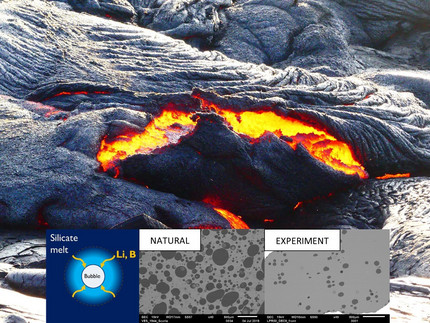Dynamics of magma ascent and volcanic eruptions
Volcanic gases are very important, because they affect the violence of volcanic eruptions. When magma is stored deep in the magma chamber, gases are dissolved in the magma. As the magma rises to the surface gases begin to separate from the magma, creating bubbles that accelerate volcanic eruptions. Therefore, it is important to understand how fast bubbles form and grow magmas. This is studied in this project. In the laboratory the conditions of a magma rising from the magma chamber to the surface are simulated using an apparatus that allows performing experiments at high pressure and high temperature. Afterwards, samples are studied to understand the relation between bubbles and chemical changes around them to the different velocities of ascent. Particularly, chemical gradients in boron and lithium around bubbles may be used to estimate ascent rates of magmas prior to eruptions. Finally, these results are applied to natural samples from various volcanoes around the world.
Diffusive fractionation of lithium and boron isotopes in silicate melts: a tool to study degassing in ascending magmas
DFG project, M. Wilke & S.B. Cichy in collaboration with D. Laporte & K. Koga (Laboratoire Magmas)

